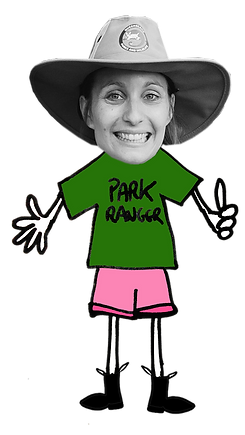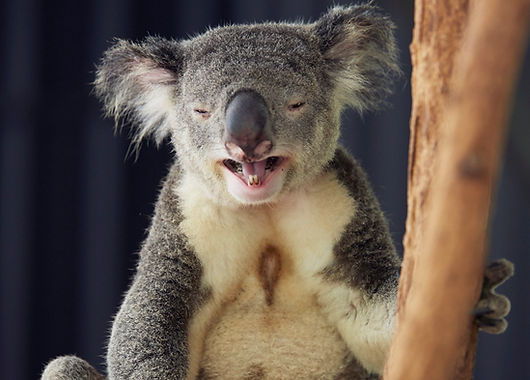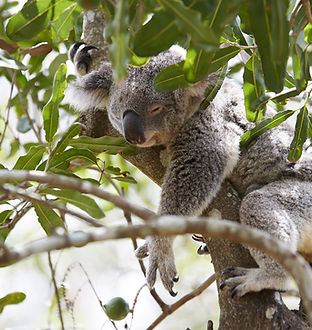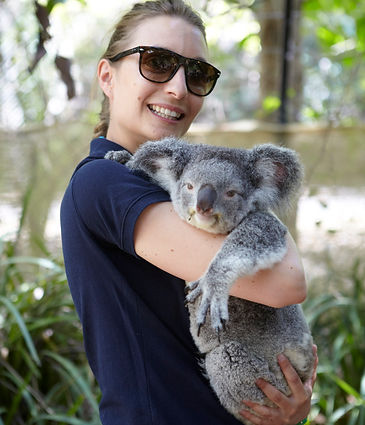
#8
The KOALA
Koalas are a truly Australian animal but they don’t live all over the country Their distribution covers much of Queensland, New South Wales, Victoria and a small area in South Australia.
In Queensland, the greatest concentration of koalas is found in South East Queensland.
Koala is one of the most iconic Australian animals, and this is also one of my favourite :-)
Because they are so unique and fragile, but also so adorable, I could not not blogging about them!
As part of my journey as a Queensland’s Park Ranger, I have been lucky to see these fluffy creatures many times and I want to share with you what I have learnt.

Where they live?


How to tell a female and a male apart ?
Males are bigger, especially their head. They got a larger nose and have a large scent gland which shows as a dirty patch on their white chest.
They are smelly as this gives them a strong odour.
Females have a clean white chest and a pouch for baby koala.

Quick Family Presentation:
Koalas are marsupials, a subclass of mammals. They belong to a unique family called Phascolarctidae. What is important to remember is that they are DIFFERENT from any other living marsupial.
Special
Features
- Have a large round head with big furry ears and a stout body
- Covered in grey-brown fur with white fur on the chest, inner arms, ears and bottom
- Large black nose to detect other koalas and find their favourite food trees (rely on their acute sense of smell)
- Poor vision but good hearing which helps them to detect predators and other koalas
- Strong claws for climbing trees
Did you know?
- In Queensland, koalas are smaller, less furry and lighter in colour than koalas in southern Australian states.
- In Queensland they weigh on average 6kg (females) and 8kg (males) whereas the average weight of a female in Victoria is 8,5kg and up to 13kg for a male!!


Why they sleep so much ?
This is because of their specialised diet of eucalypt leaves which are low in nutrients and energy.
Eucalypt leaves are toxic and the koala is the only animal able to eat that without dying. They are able to break down the toxins using a specialised digestive system!!
Koalas are very selective and eat only certain eucalypt leaves, every koala is different and has its favourite! They need to consume about 500 grams (approx. 2 shopping bags) of leaves every day.
To be able to digest that, they need to sleep up to 20 hours a day. Koalas are mostly active at night and around dawn and dusk.

Behaviour:
Koalas are solitary animals. They live within a network of overlapping home ranges, which allows contact between individuals for mating.
Males will try to establish dominance over the home range during the mating season,and begin to call to advertise their presence to surrounding koalas. They can be then pretty loud.
Reproduction and lifecycle:
Females start breeding when they are 2 years old, generally giving birth each year, they can breed their entire life span.
The pregnancy is short: only 35 days, birth usually takes place between November and February.
The young will stay in the pouch for the next 6 months, between the age of 6 and 12 months, the joey will spend time riding on its mum’s back. By 12 months of age, the young is weaned and takes up a home range. But the first year it stays closer to the mum, when it gets older, it will disperse and establish its own range.
On average koalas live to 10-12 years in the wild. Females are known to live longer.

Did you know?
When the baby koala is born, it spends its first 6 months in the pouch, after that, it will stimulate the mother cloaca and feed on faeces called pap, which contained specialised bacteria to digest eucalyptus leaves.
The joey will need these bacteria to properly digest leaves when it is older.
Conservation Status:
Every Australian state has its own status and conservation act. In Queensland, koalas are listed as vulnerable. The situation in South East Queensland is particularly concerning as this is Australia’s fasted growing region – attracting new residents each year- this urban growth is putting pressure on koalas and as a consequence are under increasing threat from habitat loss, cars, dog attacks and stress-related diseases.
How you can help?
-
You live in Australia in their habitat ?
- Plant their favourite trees to give them new food sources and shelters (Queensland Blue Gum, Brush Box, Tallowwood, Scribbly Gum for example)
- Drive carefully and respect speed limit: about 300 koalas are killed each year by motor vehicles in South East Queensland…
- Keep koalas safe from your dog
- Adapt your fences: only putting a climbing pole is a good solution for existing fencing.
- Call a koala ambulance operating every day of the year, if you have found / seen a sick or injured koala : QUEENSLAND RSPCA : Phone 1300 ANIMAL and you will be directed to the nearest koala rescue group.
-
From overseas ?
Your donations are important to save the koalas, you can also adopt one from today.
Many associations, zoos, sanctuaries lead protection programs to help koalas.
Just to quote a few:
Where to cuddle a koala and have the best experience with them in Queensland ?
To see a lot of them: Lone Pine Sanctuary in Brisbane
The most educative centre (and free): Daisy Hill Conservation Park
To see them in the wild: best chances are on Magnetic Island (I saw 5 in different places) and Noosa National Park (Attention you need to be lucky, they are not often seen and very difficult to spot!)
To touch them and get up close without paying more: Australia Zoo
Koala photos: be aware than you can’t have your “handling a koala” photo taken everywhere in Australia. For example, in New South Wales, this is forbidden to cuddle them. As a consequence, Queensland is a good place to do so for a souvenir. Almost every zoo- sanctuary has it and it costs always extra money to do it (count between $15-25). Below my personal selection.
For the most natural setting and cheapest: Bungalow Bay Koala Village on Magnetic Island and Lone Pine Sanctuary in Brisbane.
For a kitsch / artificial background: almost everywhere else.




